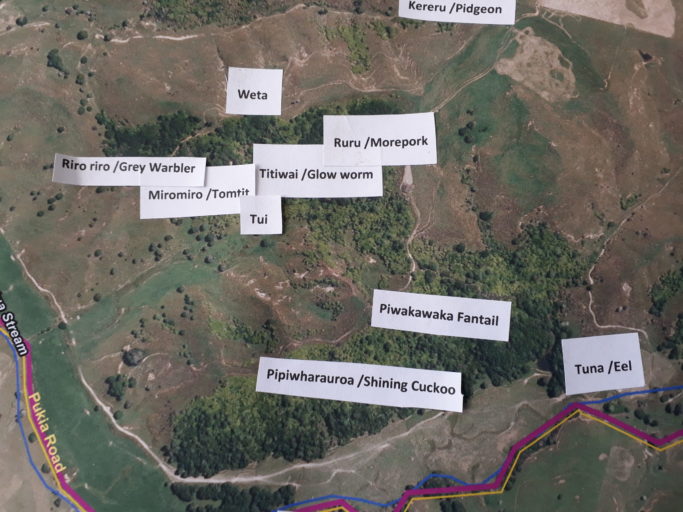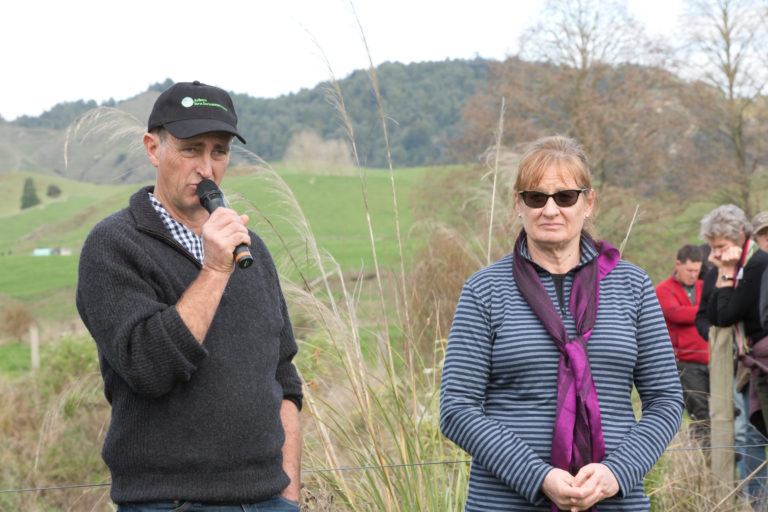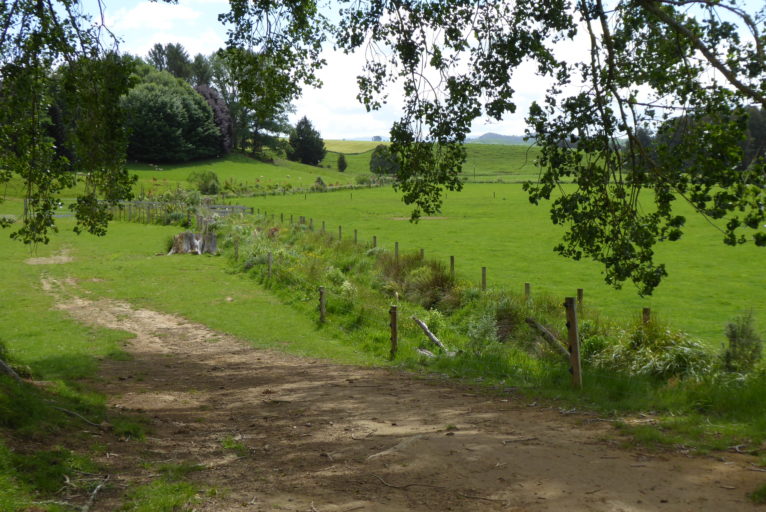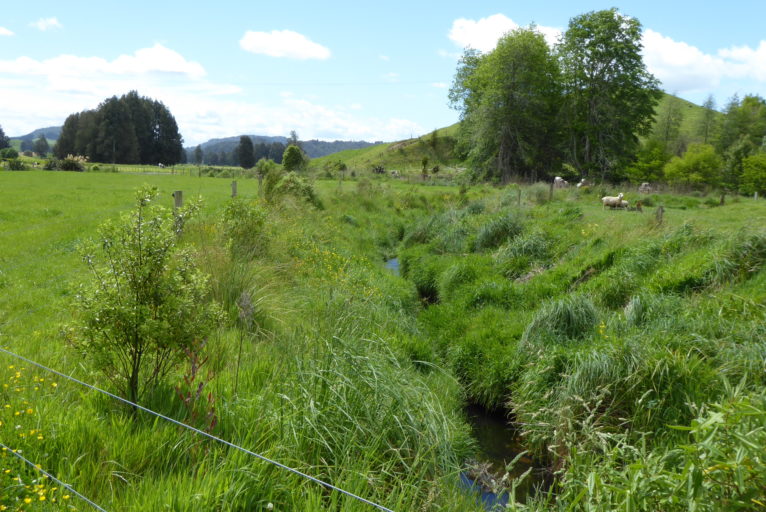Mark and Felicity Brough have created a biodiversity map of their sheep and beef farm at Paerua near Waitomo, in the central King Country. It shows where on the farm their resident falcons are nesting, which streams have kākahi (freshwater mussels), where longfin and shortfin tuna are found and where the glowworms live.

“Two or three years ago we created the biodiversity map so that we’d know where the hotspots of biodiversity are,” Mark explains. “It also means we can target where we do predator control.”
The Broughs have been on their Paerua farm for 20 years and started working to improve biodiversity about 4 or 5 years after taking on the farm.
“We contacted Waikato Regional Council for advice and some years they’ve provided funding support as well,” Mark says. “We started with restoration of a small wetland and we were getting results in terms of the biodiversity of birds, invertebrates and fish, so we decided we’d do a bit more. Now we’ve started setting ourselves targets. We’re aiming to plant 1000 native trees per year.”

Planting those trees 2 metres apart means 2km of riparian planting and fencing per year. The Broughs are aiming to use this planting to create a biodiversity corridor from the native bush on their farm to the dairy farms downstream.
“We’ve got virgin podocarp forest,” says Mark. “We’ve retired and fenced 15 hectares of native bush with 9 kilometres of riparian fencing and once the fence was there, we started to see young trees coming through. We’ve got all the usual birds: tui, kereru, bellbirds, tomtits and every year the birds are increasing.”
To date the Broughs have planted 7000 native trees, along with 400 poplar poles which stop soil erosion and provide summer shade for stock. They set their first predator traps near where the falcons were nesting.
“We concentrate on feral cats and mustelids,” says Mark. “The Waikato Regional Council has done a magnificent job of controlling possums and its now very rare to see a possum here. 1080 has really helped the falcons and native birds too.”
The Broughs’ farm is flat to rolling hill country and Mark doesn’t find trap-checking an onerous task.

“We put the traps next to the fences, so that when you’re out riding a quad bike the traps are close. The easier you make it, the more likely you are to rebait and check the traps,” he advises.
“When we started, we were getting a stoat or ferret every 2 weeks, but now we might get one in 3 months,” Mark says. “We trap rats as well. It’s really rewarding getting feral cats because they do so much damage to the sheep, with toxoplasmosis causing them to abort lambs. The cats harm biodiversity as well, killing skinks and geckos and so on.”
Recently Mark and Felicity heard about a new method for measuring biodiversity and are giving it a go.
“It’s a test of what DNA is in the water,” says Mark. “The headwaters to some of the local streams are on our land and the test can tell you what birds, mammals and invertebrates have access to the water. It only costs $155, so it’s very affordable. You get a kit, take a water sample, send it to Wellington and get the results a couple of weeks later. We’ve done our first test and should get the results in a week or so.”

Mark and Felicity are planning to repeat the test every couple of years so that they can monitor progress of their restoration and trapping work and detect any new species to add to their biodiversity map.
“It should give us a very good base to measure improvements,” said Mark. “We’ve only just learnt about it recently. We had a field day on the farm for the award (Mark and Felicity are Waikato regional winners for the 2020 Ballance Farm Environment Awards) and a freshwater ecologist did a presentation at the field day. He brought along an electronic probe that zaps the water (bringing organisms to the surface) and allows you to look at what is living in the creek and he told us about the DNA test which is something anyone can do themselves.”
As well as creeks and a fenced swamp/wetland, there are ponds and two small lakes on the farm.

“The lakes are aesthetic but they’re not as good as the swamp for biodiversity,” Mark says. “We also have a commercial beekeeper who leaves his hives on the farm all year round. We have an agreement with him not to take the hives away so that there’s no risk of bringing disease back to the farm. It means the bees are here for clover pollination as well as bush honey.”
Mark and Felicity are hoping their efforts – and the insights they’re gaining through their biodiversity mapping – will inspire more farmers downstream to get involved in protecting their own biodiversity.
“Some farmers are already doing a lot, but it would be good to see more getting involved,” says Mark.
Mark’s even found a way to rope in some retired farmers to help with local conservation.
“I set up a trapping group of retired farmers to protect blue duck in Pureora Forest,” he explains. “They call their group ‘Dad’s Army’ and they’ve been protecting whio for 10 years. They’ve got 300 DOC 200 traps that they look after, working with the Department of Conservation and various sponsors. They’re doing a survey to see the increase in whio and every two months they recheck the traps and log the kills.”

